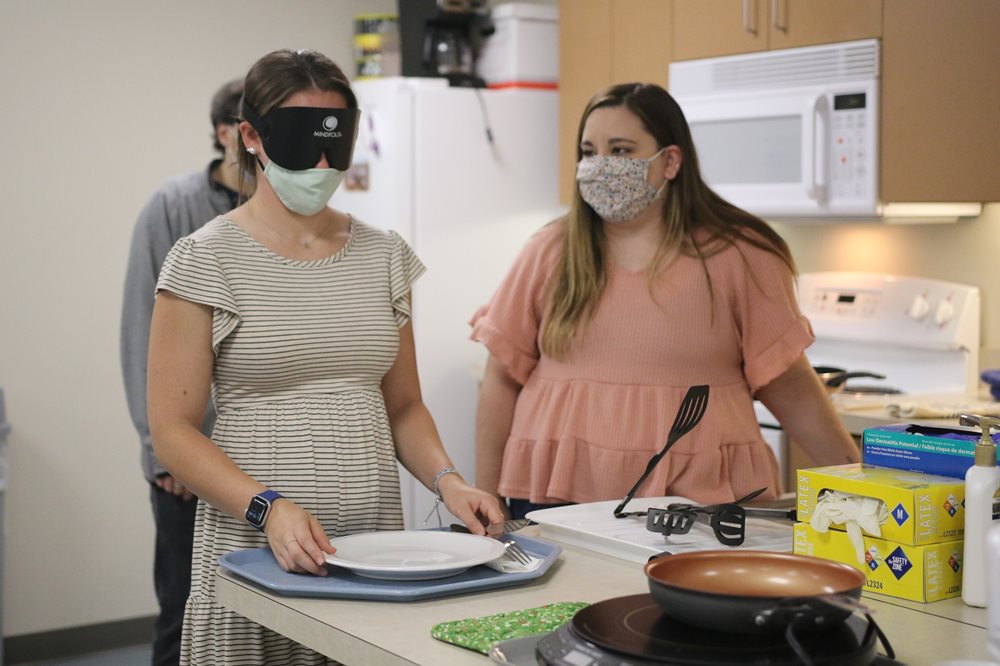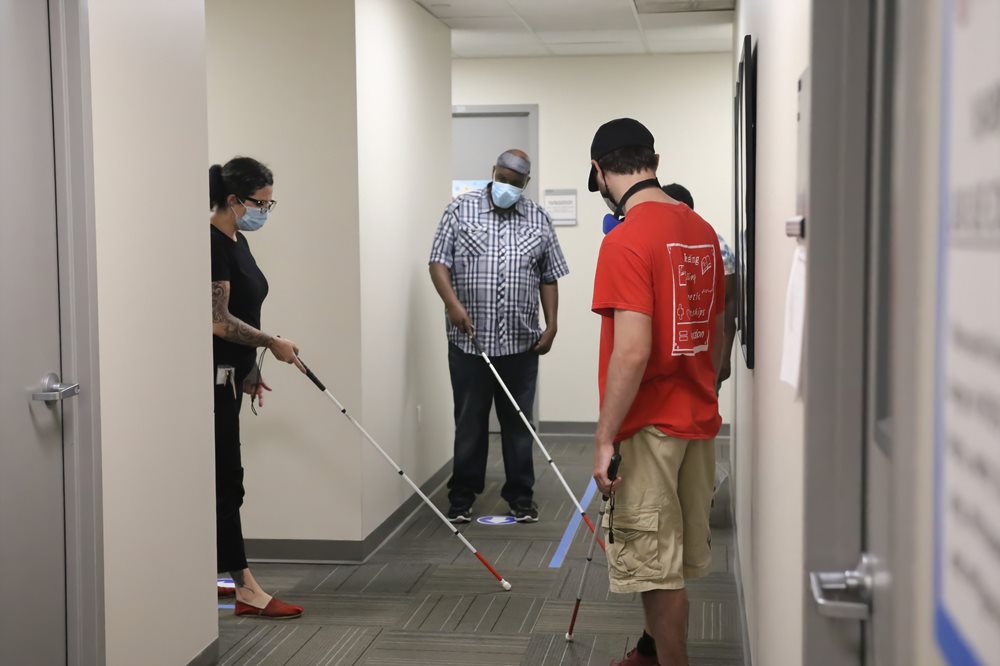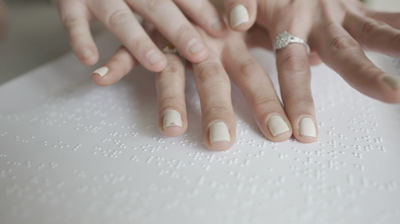In this podcast, we talk with Candida Mulligan, an admissions officer in Salus University's Office of Admissions. She talks to us about the Blindness and Low Vision Studies (BLVS) program, and tips and tricks for application.
Q: What is the admissions timeline for the BLVS program?
A: Unlike some of the other programs at Salus, the BLVS program is one of the few programs that actually has multiple start times. One can either choose to start in the fall, spring or summer. We have different application cycle dates, and we have them listed on the admissions tab at salus.edu because there are different dates for each cycle. For example, we're currently accepting applications for the spring, and then the application deadline would be November 30. For the fall, it would usually be June 30. And then of course for the summer, it's usually anywhere between April, May.
 Q: What kind of on-campus facilities would BLVS students and the program use?
Q: What kind of on-campus facilities would BLVS students and the program use?
A: In addition to all of the regular classrooms at Salus, the BLVS programs also use the CHER Lab located on the third floor of West Wing. That lab actually is set up to mimic an apartment or a home setting, so there's a kitchen, a bed and a bathroom. It's set up primarily for students who are learning for the VRT program and also the Low Vision Rehabilitation (LVR) program. That's where they learn how to cook under blindfold simulation, so that they can understand their clients and the people they will be working with.
Also, inside of the Learning Resource Center, there is what we call the Accessibility Lab. In there, there's equipment that's primarily used for anyone who may have accommodations, but also for those who are pursuing the Teachers of the Visually Impaired (TVI) program, to have the ability to go in there and use some of the equipment, such as a Braille writer. They also have a Braille keyboard, large-print keyboards, and audio programs such as Perky Duck and other programs in case you have visual impairments and may need the information given to you in an audio format.
The program also has the Sensory Garden located right outside the Hafter Center. It's primarily used by the BLVS program, Speech-Language Pathology (SLP) program and the Occupational Therapy (OT) program. But the BLVS program really uses that, especially in the summertime. Because unlike some of the other programs, BLVS is primarily online for the fall and the spring semester. They're on campus for the summer, which is a perfect time for the Sensory Garden, to go over there and learn how to use and integrate the walking area, the grounds, and everything, over from the Sensory Garden for BLVS program.
 Q: What are some admissions requirements and maybe tips for applying to the BLVS program?
Q: What are some admissions requirements and maybe tips for applying to the BLVS program?
A: Some of the important things to remember is that we do work off of rolling admissions, as most of the programs do at Salus. You would want to get your application in on time, and the main thing unlike some of the other programs, we don't have a set prerequisite. If you have a bachelor's degree and you've done some shadowing, or some research in one of these programs, or you attended a webinar, and you were able to find out about these programs, and you realized, “I want to know more about this. This is something that I'd be interested in learning and pursuing,” and you make that decision to apply to the program. One's passion is one of the most important things that's needed because it is a growing field. A lot of these jobs are in high demand right now, but it's something that you definitely have to be passionate about.
You definitely have to want to be a people person, someone who likes helping others and helping other people achieve some of their basic living skills, like transportation, how to get to places. Or even just their everyday ability to learn, to read, or to navigate things that many of us may take for granted.
 Q: What is the evaluation process once they have applied to this program?
Q: What is the evaluation process once they have applied to this program?
A: Once we received the applications, which are submitted through GradCAS, we then go through the applications and make sure that all of the application requirements are met. Once we've gone through the application, everything's in, we then assist the applicant with setting up an interview with a program director. Those who applied to the BLVS program would meet one-on-one with the program director, and the program director's the main one who conducts the interview with the applicant. Then they make the determination if the applicant is accepted or not accepted.
Q: Is there anything else you would like to add?
A: I don't think there's a lot of people who are aware of the need that the BLVS professionals can do for them. I don't think a lot of people are aware of these professions. We in admissions have been trying our best to really get the word out about these four fields that fall under BLVS.
Although the program is called Blindness and Low Vision Studies, there's actually four different professions that fall under that. It's Orientation & Mobility (O&M), Teachers of the Visually Impaired, Vision Rehabilitation Therapy, and then Low Vision Rehabilitation. Those four fields are in high demand right now. There is a shortage in the field, and we're trying our best to get people to become aware of the need for these professionals and the services they can offer.
To learn more about the BLVS program, visit salus.edu/BLVS.